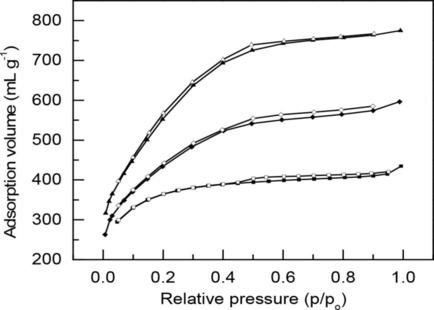当前位置:
X-MOL 学术
›
Electroanalysis
›
论文详情
Our official English website, www.x-mol.net, welcomes your feedback! (Note: you will need to create a separate account there.)
Activated Carbon Derived from Rice Husk as Efficient Oxygen Reduction Catalyst in Microbial Fuel Cell
Electroanalysis ( IF 3 ) Pub Date : 2020-10-07 , DOI: 10.1002/elan.202060409 Yongli Jiao 1 , Youshuang Hu 1 , Lujie Han 1 , minghua zhou 2
Electroanalysis ( IF 3 ) Pub Date : 2020-10-07 , DOI: 10.1002/elan.202060409 Yongli Jiao 1 , Youshuang Hu 1 , Lujie Han 1 , minghua zhou 2
Affiliation

|
In microbial fuel cells (MFCs), an important factor limiting practical applications is the high catalyst cost in cathode. Herein a rice husk‐based porous carbon made through hydrolysis, activation and rolling was used as novel cathode. These porous carbons were characterized by SEM, XPS and BET analysis, and electrochemical measurements including linear sweep voltammetry and Tafel test were investigated. A maximum powder density (317.7±0.4 mW m−2) on AC‐KOH‐1h with the largest BET surface area of 1809 m2 g−1 was obtained. This study revealed a fresh territory about the application of porous carbon produced by renewable resources for MFC electrode.
中文翻译:

稻壳衍生的活性炭作为微生物燃料电池中高效氧还原催化剂
在微生物燃料电池(MFC)中,限制实际应用的重要因素是阴极中高的催化剂成本。在本文中,通过水解,活化和碾压制成的基于稻壳的多孔碳被用作新型阴极。通过SEM,XPS和BET分析对这些多孔碳进行了表征,并研究了包括线性扫描伏安法和Tafel试验在内的电化学测量。在AC‐KOH‐1h上获得最大粉末密度(317.7±0.4 mW m -2),最大BET表面积为1809 m 2 g -1。这项研究揭示了关于可再生资源产生的多孔碳在MFC电极中的应用的新领域。
更新日期:2020-12-01
中文翻译:

稻壳衍生的活性炭作为微生物燃料电池中高效氧还原催化剂
在微生物燃料电池(MFC)中,限制实际应用的重要因素是阴极中高的催化剂成本。在本文中,通过水解,活化和碾压制成的基于稻壳的多孔碳被用作新型阴极。通过SEM,XPS和BET分析对这些多孔碳进行了表征,并研究了包括线性扫描伏安法和Tafel试验在内的电化学测量。在AC‐KOH‐1h上获得最大粉末密度(317.7±0.4 mW m -2),最大BET表面积为1809 m 2 g -1。这项研究揭示了关于可再生资源产生的多孔碳在MFC电极中的应用的新领域。



























 京公网安备 11010802027423号
京公网安备 11010802027423号